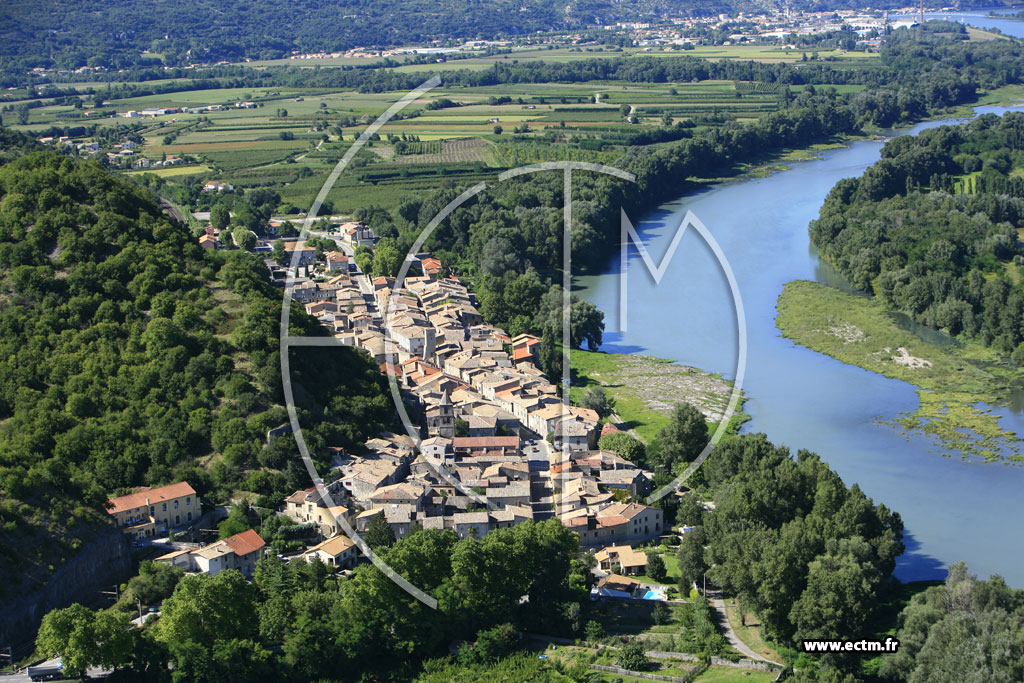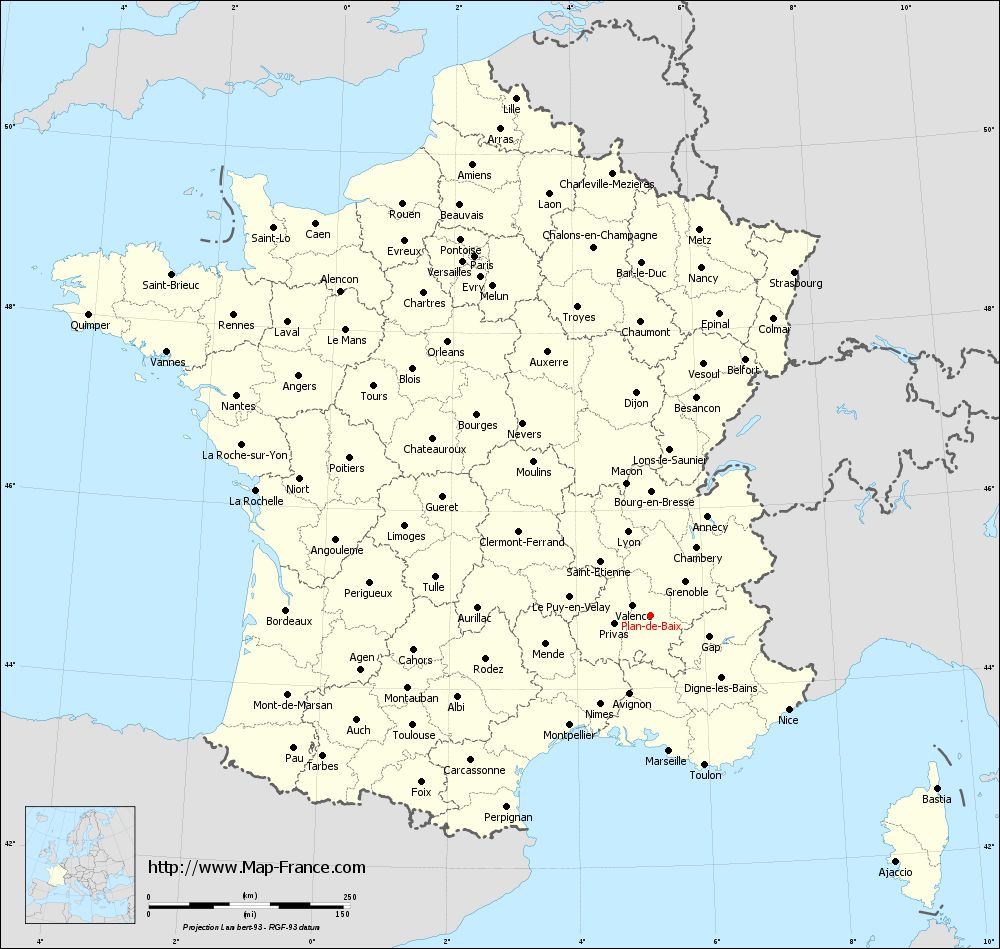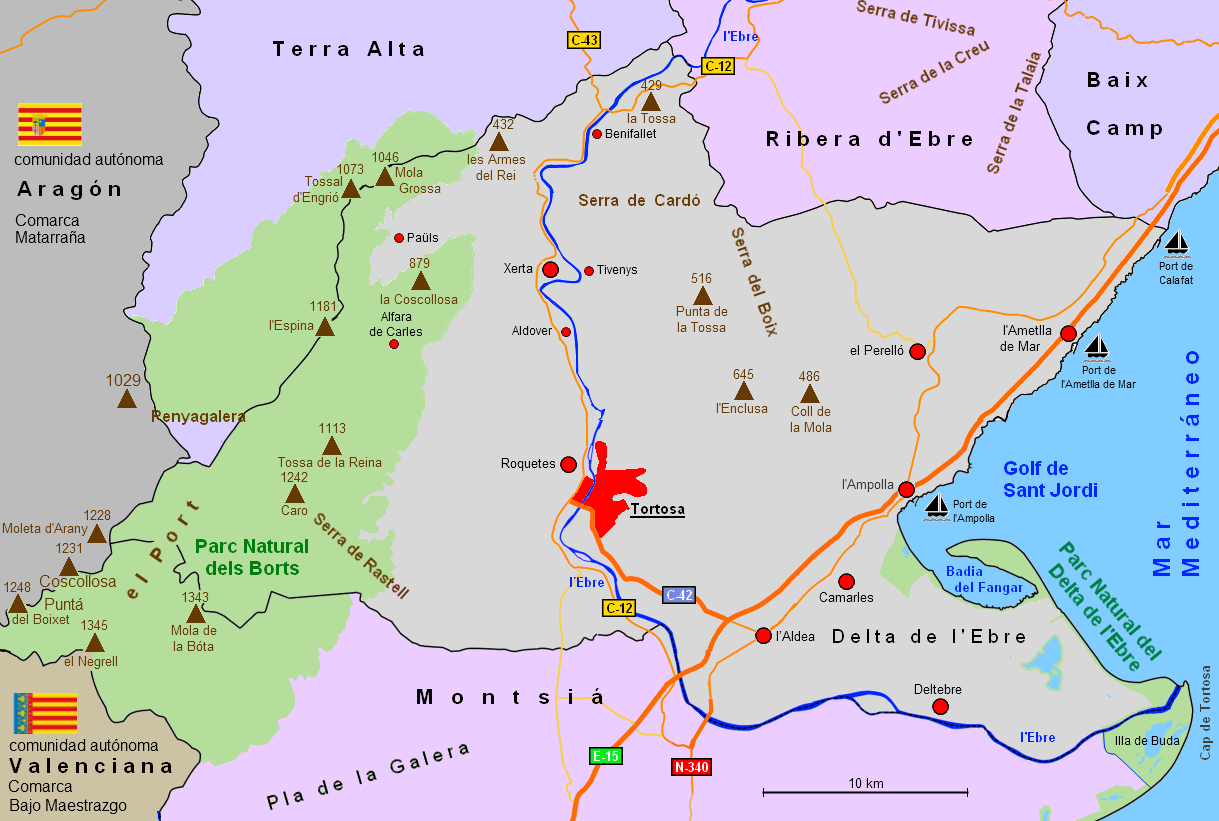Baix
Baix is a commune with 1039 inhabitants (as of 1 January 2011) in Ardèche, in the Rhône -Alpes; it belongs to the district Privas and Canton Chomérac. The inhabitants are called Baixois and Baixoises.
Geography
Baix is situated on the right bank of the Rhône, and thus on the border of the Drôme département. Neighboring municipalities are Cruas and Loriol -sur -Drôme. The next largest city is Montelimar 17 miles away to the southwest. The Payre flows near the village, in a tributary of the Rhône.
History
The Romans founded the settlement Batiana at the site of the present town (from Latin batos = easy and ana = crossing), since the Rhône is particularly flat and Islands lie in the middle of the river. At that time ran through the city one of the few connecting routes between the left and the right bank of the Rhone. Baix is also mentioned on the Roman map Tabula Peutingeriana. Over the past centuries, the course of the Rhone has been modified several times and changed, which explains why the place was still in ancient times on the right bank and the left bank of the Rhône is today.
As a result of the migration of nations, the city was twice completely destroyed, 411 by the Vandals and 735 by the Saracens. After the second restoration of the city, the Latin -speaking population did not mix with the Phocian and decided to abandon settlement. They founded a new town north of Pusillus Ouvèze, today's town of Le Pouzin. The Greek-speaking population built the settlement Baios, emerged from the Baix. In the Middle Ages the town was named Bay -sur- Bays.
In the 13th century the citizens of a law of the duty exemption was granted in the 15th century by Amadeus IX. has been confirmed by Savoy. was then considered the place as one of the safest communities for Protestants.
In the 14th century it served as the residence of the Countess top of the region, which was an ally of Raymond de Turenne, who had begun the war against the statements of the Pope. Until the 16th century Baix was therefore also a safe place of stay of the Protestants in the South of France.
Attractions
Baix is a village with houses from the 15th and 16th centuries, which have also painted some with frescoed walls. The architecture of the church is typical of a town on the Rhone, which is dominated by elements of navigation. Also the fountain in honor of Louis XVI. and the associated washing area attract tourists. The clock tower of the city from the 16th century, and the remains of the old castle are also attractions of the tourists. In Baix is the restaurant " La Cardinale ". On the hill above Baix the ruins of the old castle can still be seen today.
Most visits are the churches of the village, a modern ecumenical church, and the chapel of Saint- Euphémie with its ancient tombs in the cemetery and the Way of the Cross. The church of Saint -Nicolas, named after the patron saint of sailors, dates mainly from the 16th century.
The view from the Rhône is determined by the rock wall in the background of Baix, and the water drainage channel which supplies the Logis -Neuf. A botanical path allows visitors to discover the flora and fauna typical of the landscape.









